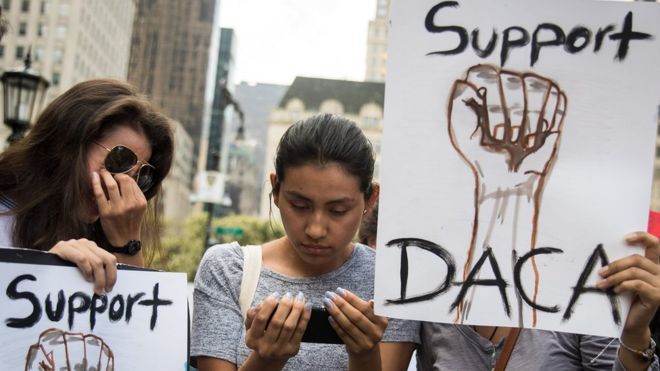Sadly, we have reached the end of our blog. We hope that this meeting with the development of immigration in the United States has interested you as much as it has interested us. We also hope that you have learned something beyond a chronology of facts and data and you have managed to understand the country itself.
To conclude all these entries and in relation to the last post we would like to tell you about some recent recognitions that were made in the Latin Grammy, held in Las Vegas on November 17, 2017 and in the Grammys, held in New York on January 28, 2018.
The Spanish singer Alejandro Sanz received the "Persona del Año" award in the Latin Grammy for his successful career and took the opportunity to defend the "Dreamers".
"They have lived in this country for many years and yet they are still in an illegal situation, they are the 'dreamers' and those children are our children, from our community. When you are a father, you are the father of all the children of the world." assured the singer.
Later, Sanz sang his hits "Cuando Nadie Me Ve", "No es lo Mismo" and "Corazon partío", accompanied by a group of "dreamers" with black shirts in which you could read slogans like "We have a dream" and "Protect our families."
Camila Cabello introduced U2 at the Grammy Awards in New York City, where she delivered a brief, moving speech on being an immigrant to the United States.
“Tonight, in this room full of music’s dreamers, we remember that this country was made by dreamers, for dreamers, chasing the American dream. I’m here on this stage tonight because just like the Dreamers, my parents brought me to this country with nothing in their pockets but hope. They showed me what it means to work twice as hard and never give up. And honestly no part of my journey is any different from theirs. I’m a proud, Cuban-Mexican immigrant, born in eastern Havana, standing in front of you on the Grammy stage in New York City. And all I know is that just like dreams, these kids can’t be forgotten and are worth fighting for."
Rapper Logic also dedicated words to "beautiful countries full of culture, diversity and thousands of years of history," as well as to the rights and equality of women. "In the name of those who fight for equality in a world that is not equal, it is not fair and it is not ready for the change that we are going to bring, I tell them to bring their tired, poor people and any immigrant who seeks refuge."



















